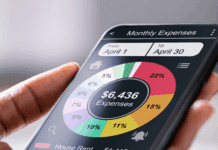Financial resilience is not just about having money in the bank. It is the ability to stay steady when life throws curveballs—job loss, car trouble, medical bills, or an unexpected expense that could easily derail a fragile plan. True resilience means you can absorb a hit, recover, and keep moving forward without losing your balance. It’s less about luck and more about building systems that protect you from chaos.
For many people, the first step toward resilience begins with managing debt wisely. Carrying too much high-interest debt can feel like trying to run uphill with a backpack full of bricks. Learning about structured debt reduction programs can help lighten that load, making it easier to free up money for savings and emergencies. Once your financial footing is steadier, every other part of resilience—from planning to emotional stability—becomes easier to build.
Money stress can feel isolating, but it’s really just a signal that your systems need attention, not a sign of failure. When you turn that stress into action, small choices start to compound into confidence.
Start by knowing your real numbers
You cannot build resilience around vague guesses. Write down exactly what comes in and what goes out. Track your income, fixed expenses, and variable costs for a month or two. You might discover that your biggest leaks are habits you barely notice—subscriptions you forgot to cancel, impulse buys, or too many meals out. Once the numbers are visible, you can make changes based on facts, not assumptions.
Clarity turns uncertainty into control. It’s not about judgment, it’s about visibility. And that visibility allows you to prepare for the next step: intentional budgeting.
Create a budget that flexes instead of breaks
Rigid budgets often fail because they ignore how life actually works. Bills arrive unexpectedly, birthdays appear every year, and cars never choose a convenient time to need repairs. Instead of treating your budget like a contract carved in stone, design it like a living plan that flexes with your reality.
Start by covering your essentials: housing, utilities, food, and transportation. Next, assign money to savings before you spend on anything else. Then give each dollar a job—some for fun, some for future you. When surprises happen, move money within your plan instead of reaching for a credit card. This simple act of reshuffling instead of borrowing strengthens your long-term stability.
The Consumer Financial Protection Bureau offers useful worksheets for creating budgets that adapt to changing circumstances. Flexibility is not a sign of weakness—it’s what keeps your financial structure from cracking under pressure.
Build your safety net early and consistently
An emergency fund is not just a financial cushion. It’s a psychological one. Even a small amount can reduce stress when life goes sideways. Start with a simple target: $500 for short-term emergencies, then aim for one month of living expenses, then three to six months. Automate the savings so you never have to rely on motivation. When you treat your emergency fund as a bill that must be paid each month, it grows quietly in the background.
Keep this fund separate from your checking account to avoid “accidental spending.” If you ever need to use it, rebuild it as soon as possible. The peace of mind that comes from having even a modest emergency fund cannot be overstated.
Use debt as a tool, not a trap
Borrowing is not inherently bad. Used wisely, it can open doors—to education, reliable transportation, or homeownership. But when borrowing becomes the default answer to every inconvenience, it erodes stability. Before taking on new debt, ask three simple questions: Does this help me earn or save money in the long run. Can I realistically afford the payments without stress. Is there a cheaper or slower way to get the same result.
Understanding interest rates, repayment terms, and penalties protects you from costly surprises. The Federal Trade Commission provides a clear overview of credit and loans that can help you spot and avoid unfair terms before you sign. Resilience grows when your debts serve your goals instead of dictating them.
Set goals that feel real, not abstract
Financial goals that live only in your head rarely survive busy weeks. Write them down and attach numbers and dates. Instead of saying, “I want to save more,” try, “I will save $1,000 by next June for emergencies.” Concrete goals are easier to measure and celebrate. Break big goals into smaller checkpoints to keep motivation alive.
When you hit a milestone—no matter how small—pause to acknowledge it. Each win is proof that your plan works. That sense of progress builds confidence, which in turn strengthens your emotional resilience when setbacks happen.
Protect both your money and your mindset
Financial health and emotional health are linked. Money stress can cause sleep problems, anxiety, and even conflict at home. Likewise, burnout or depression can lead to impulsive spending or avoidance. Building resilience means caring for both sides of that equation.
If you find money anxiety creeping in, create a simple routine to calm yourself before making financial decisions. Take a walk, write down the facts, or talk things through with someone you trust. Even a few minutes of distance can turn panic into perspective. You make better choices from a calm state than from a frantic one.
Stay proactive when life changes
Resilience is not something you build once and forget. It is a continuous process of adjusting as your life evolves. A new job, a growing family, or a health challenge can change what financial stability looks like. Check in with your budget and goals a few times a year. Update your emergency fund target if your expenses rise. Revisit your insurance coverage to make sure it still fits your needs.
Being proactive keeps you from slipping into crisis mode. Small reviews today prevent major headaches tomorrow.
Lean on trustworthy information, not guesswork
When confusion sets in, accurate guidance saves time and money. Reliable resources like nonprofit credit counseling agencies, financial literacy organizations, or government education sites can help you navigate options without pressure or bias. Reading from credible sources helps you separate useful strategies from quick fixes that promise too much.
Avoid advice that sounds too good to be true. Real financial resilience comes from patience, consistency, and education—not shortcuts.
The bottom line
Building financial resilience is about creating systems that support you when life doesn’t go as planned. It starts with managing debt responsibly, spending with intention, and saving for both the expected and the unpredictable. Along the way, take care of your emotional well-being, because calm decisions lead to smarter ones. Resilience grows quietly with every balanced choice you make. Over time, those small habits build a foundation that can carry you through uncertainty with confidence and control.






